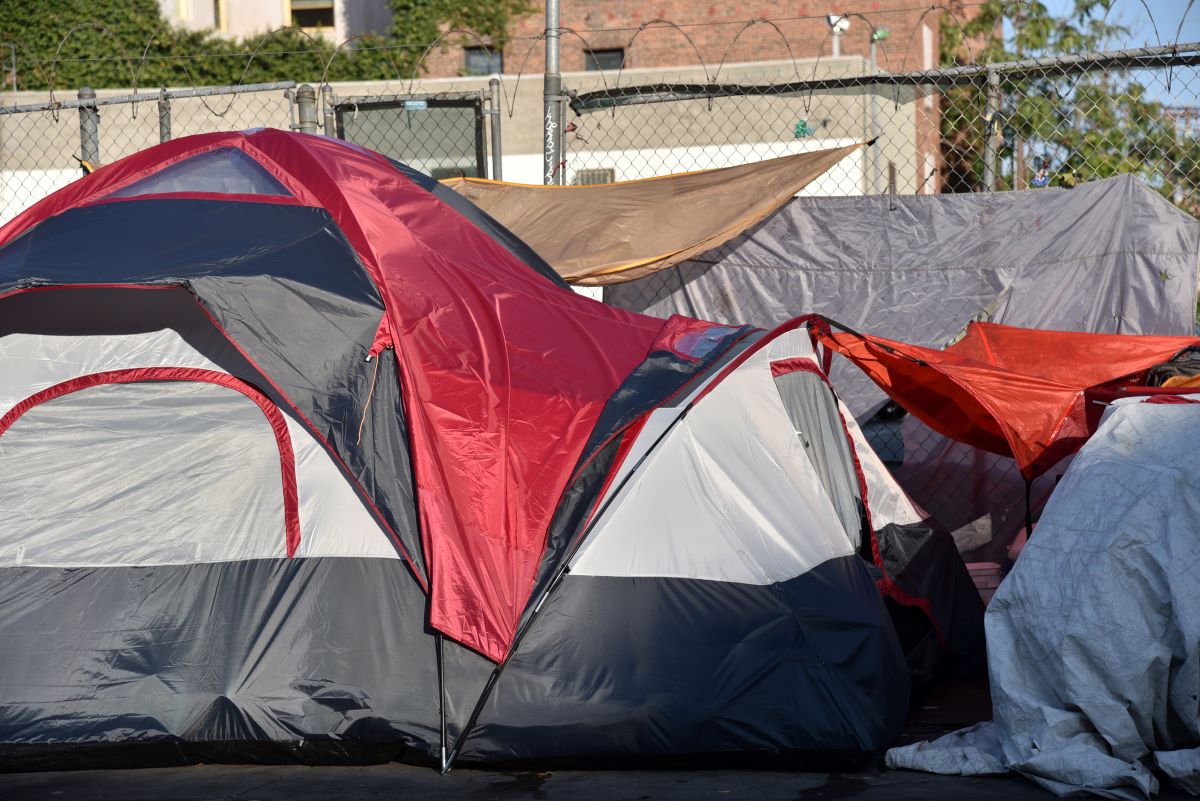A report by Western Massachusetts Network to End Homelessness found 3,305 people were experiencing homelessness in 2023. This is the highest homeless count in Western Massachusetts within the last five years.
The findings are based on the annual point-in-time count conducted in Western Massachusetts in January. Most of the homeless population consisted of families, with 2,288 individuals living with family members. Homeless individuals with no family amounted to 1,017 people. The majority of homeless people live in Hampden County.
Alarming: 150% Increase in Unsheltered Homelessness in Western Massachusetts
In 2023, there were 199 unsheltered homeless people in the region. However, the same population amounted to 80 people in 2021. This is an approximately 150% increase in just two years.
Unsheltered homeless people are generally more vulnerable to life-threatening situations than their sheltered counterparts. Unsheltered homeless people have less access to services such as transportation, financial assistance, and potential routes to the rental market.
These are typically services offered at homeless shelters, which attempt to connect homeless people to employment, health, and housing resources. Access to services helps people escape homelessness; having access to housing while receiving services helps people remain housed.
Since unsheltered homeless people have less access to these resources, it is more difficult to escape homelessness. Meanwhile, the lack of shelter space, transitional housing, and ultimately affordable housing throughout the country leaves people on the streets because there is no other option. As homelessness increases, so will unsheltered homelessness.
People of Color Overrepresented in the Region’s Homeless Population
The report shows that 49% of the homeless population in Western Massachusetts was Hispanic, and 23% was Black. People of color lack representation in dominant sectors of the US, such as politics, arts, etc. Nevertheless, when it comes to homelessness, these populations are overrepresented everywhere.
Looking at the region’s population proportion, Black people make up 5%, and Hispanic people make up 17%. Yet combined, they make up 72% of the total homeless population. This is the result of systemic discrimination.
Black and Hispanic people are a minority in Western Massachusetts. However, they make up the majority of the homeless population. If we study American history, we can see many systemic practices that resulted in the marginalization of people of color. In the context of housing, there was a discriminatory practice known as “redlining.”
The redlining system worked like this: in areas where people of color lived in high numbers, banks would label the area as “too risky” to lend money. If someone from that area wanted to buy a house, the banks would not lend them a mortgage. Lenders systemically denied people of color the opportunity to obtain a mortgage.
Without mortgage approval, this population could not buy a house. It also meant that their descendants would not inherit properties, a primary form of generational wealth. Since those descendants who could have been beneficiaries do not have houses today, they are more vulnerable to homelessness. This is one of the reasons behind the overrepresentation of people of color in the homeless population.
Eviction Rates Were Higher in Western Massachusetts Compared to the Previous Year
In the first quarter of 2023, there were 1,910 eviction cases in the region. During the same period in 2022, there were 1,233 cases of eviction. That is 677 more cases this year compared to the previous year.
Why is this important? Eviction plays a significant role in rising homelessness. For example, when someone is evicted, they are unlikely to secure another rental due to the lengthy application process. Where are these people supposed to go without a support system, i.e., family or friends that can provide temporary accommodations? They have no choice but to approach homeless shelters for temporary housing or turn to the streets.
A Fresh Perspective on Understanding the Current Housing Crisis
Ricardo Tranjan, a Canadian political economist and senior researcher, recently published a new book called “The Tenant Class.” He argues the current housing market is designed to protect the interest of the landlord class. Landlords want to protect and increase the value of their assets at the expense of the working-class people. Strategies such as eviction and rent hikes are a way to frighten tenants to keep them “at their place.”
Ricardo disagrees the housing crisis is solely about supply and demand. He asserts that lower-income people would still need help even if the supply and demand were balanced. Market forces incentivize developers to focus on higher-income people. It means developers will ignore the housing needs of lower-income people.
Ricardo argues without a strong tenant movement, landlords will not improve the current situation. The reason behind this is the status quo is perfect for them. They are making too much money, and to change anything means lowering their financial returns.
According to the author, people who are in the tenant class should question the current system and organize themselves.
Building More Affordable Housing and Stronger Tenant Rights Will Help Solve Homelessness
The Western Massachusetts report emphasizes the need for affordable housing and stronger tenant rights to reduce homelessness.
One of the region’s challenges is requiring 11,000 affordable housing units to decrease the housing crisis. Nevertheless, it has only prepared to build roughly 1,100 units in the next five years. The region needs more housing and must address the housing shortage of nearly 10,000 units.
As owning a house has become more expensive, we must strengthen tenants’ rights. Stronger tenant rights mean property owners cannot easily evict people in Western Massachusetts and nationwide.
There is a study that shows when tenants learn about eviction-related legal procedures, they are successful at fighting it. Generating awareness about evictions and tenant rights can lead to tenants taking collection action to demand stronger rights.











